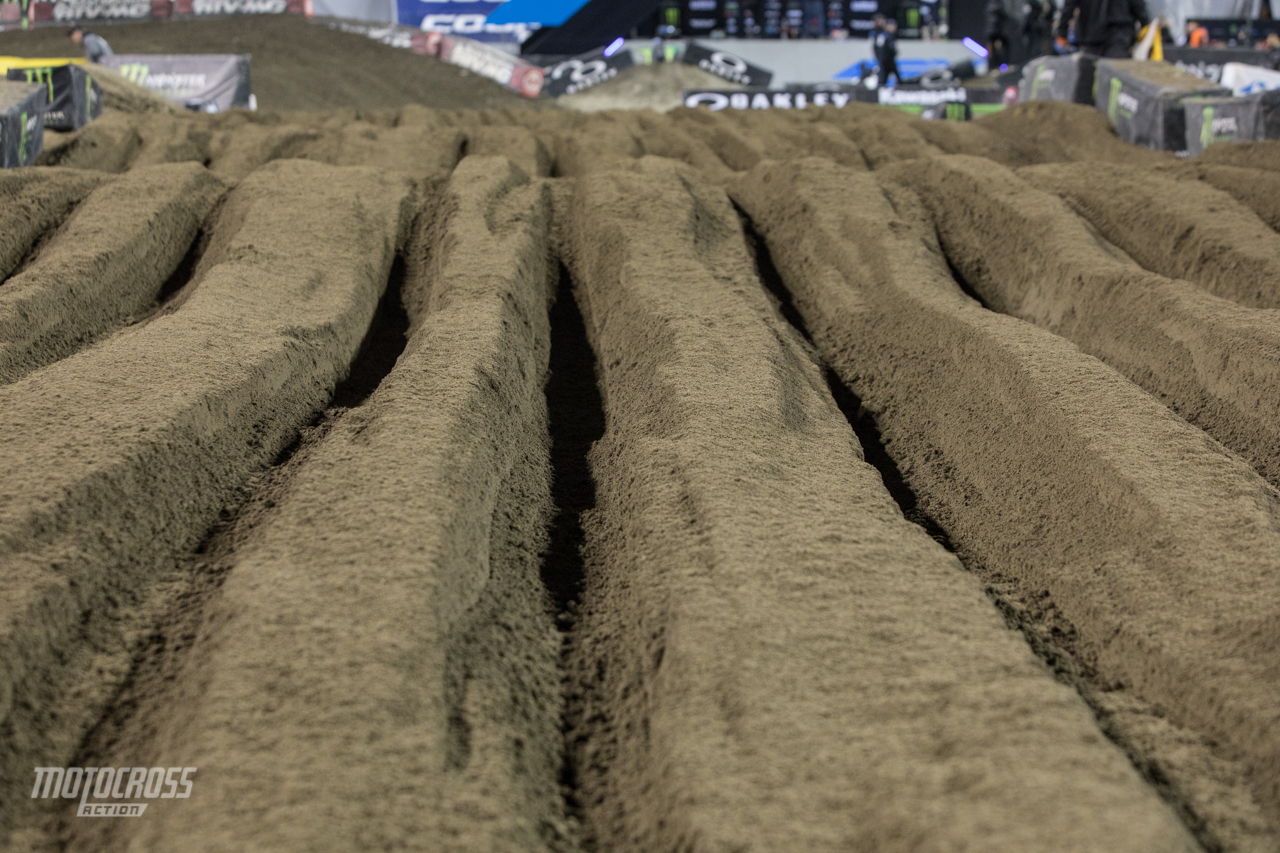TEN THINGS ABOUT MOTOCROSS TECHNIQUE DRILLS
(1) Drills. In every top-tier sport, such as baseball, football or basketball, drills are an essential part of honing the craft. Drills help refine one’s technique. They take a conscious movement and, with repetition, make it a subconscious movement. If you are just practicing the game or spinning laps, it is hard to focus on the small changes necessary to refine your technique. That’s why it is best to put some time aside for focusing on repetitive drills. This way, what you’re working on will automatically be in your subconscious mind when you get back on the track. Drills are a great way to be a better—and safer—rider.
(2) Circle drills. Corners are where motocross races are won. If you don’t have good corner speed, you won’t be able to do the jump out of the corner. Your clutch will be working twice as hard, and your rear end will be more likely to come around on you. You can make big and small circles. With each size you will learn different things, but the fundamentals are the same no matter what size the circle. Perfect form is the key with any drill. You should refrain from touching the rear brake while doing circle drills and keep your outside foot on the ball of the foot. If you build up too much speed and are starting to come out of the rut, it is time to keep a finger over the front brake lever. This will allow you to drag the front brake, which will help keep the front end from coming out of the rut.
(3) Variations. Circle drills are beneficial in three variations. All are, however, done without using the rear brake. (a) Normal technique with your leg in front of you. (b) Normal technique with both feet on the pegs. (c) Standing with both feet on the pegs.
(4) Figure eight. Figure-eight drills are very effective. It is good to practice big and small figure eights. The small one keeps the speed down so you can focus on body movement and technique getting into the corner. It is also beneficial to use this drill without using your rear brake or even with no brakes at all. It will help you learn how to carry momentum more effectively.
(5) Front-brake drills. Learning to use the front brake effectively can only be achieved by knowing its limitations. Different body positions and learning how much modulation is needed for different braking scenarios will help you hone your craft. You can test these body positions and different modulations by doing front-brake drills. These drills are performed in a straight line with only the front brake. Start slow. After some practice, start gaining more speed. Always come to a complete stop. By doing this, you will learn the front brake’s limitations.
 Don’t wait until you are looking down the longest ruts in the world to learn how to ride through them.
Don’t wait until you are looking down the longest ruts in the world to learn how to ride through them.

(6) Rut track. Using a rut track is great for many aspects of riding. It allows you to transfer your skills from drills to the track. It is great to slow things down and feel the flow. As the flow comes at a slow speed, you can gradually pick up the pace. Also, doing no-brake and no-clutch drills around a rut track is beneficial.
(7) Rear-brake drills. These drills are performed the same way as front-brake drills—in a straight line—only using your rear brake and coming to a complete stop. When you perform these drills, you will learn that the rear brake is more like a rudder, as the front brake does most of the braking. However, you still want to get the most out of your rear brake, as it accounts for 20 percent of your stopping power. As you do these drills, you should concentrate on modulating the rear brake without locking it up. If the rear wheel is locked up, the rear end can step out and you’ll lose braking power. Try to use the rear brake as though it were the anti-lock brakes on you car.
(8) Powerslide. There are times when it is necessary for your bike’s rear end to step out, specifically in flat corners. Often it happens by accident, which can lead to high-siding or sliding out. By practicing powersliding around flat circles, you will learn to be safer and more calculated in turns. This is a more advanced technique, but with practice, good body position and judicious throttle control, you can master it. Too easy? Try powersliding in circles standing up with both feet on the pegs.
(9) Clutch drill. Many American riders are in the habit of abusing the clutch. Riding laps without the clutch will teach you how to carry more momentum and flow around the track. Plus, you won’t fry so many clutches.
(10) Standing drill. After you’re comfortable doing circle drills while standing, try it around an entire track. That’s right; never sit down. Many riders tend to sit in rough chop. This drill will teach you where to stand (you’ll feel the difference) and help improve your balance.






Comments are closed.